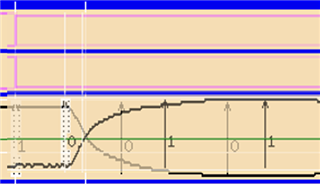Hi,
We're doing some characterization of PN SN65LVDM050QDQ1 and have noticed some slight discrepancies that I was hopeful TI could enlighten us on based off your own internal measurements.
Specifically, on the receiver side, tPHL, tPLH, and the corresponding pulse skew - see results below.
| tPHL (avg) |
tPLH (avg) |
tsk(p) (pulse skew) (avg) |
|
| +25C | 3.49 | 0.972 | 2.518 |
| -40C | 3.24 | 0.81 | 2.43 |
| +125C | 4.21 | 1.56 | 2.65 |
Question is are these results representative of what TI has characterized internally?
The low-to-high and high-to-low transitions are well within specification; However, the datasheet suggests those two limits should be within .1ns of each other, so wondering if there's either a discrepancy in the datasheet limits, or in our test methodology.
Thanks,
Tim





